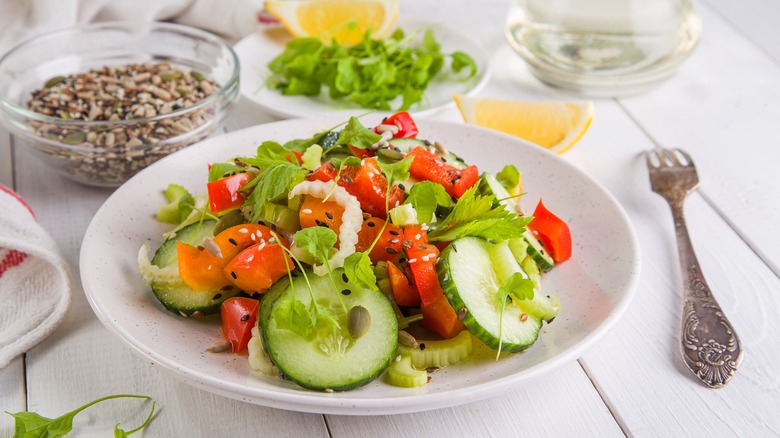Avoid These Rude Requests When Dining At A Restaurant In Italy
Dining etiquette changes from setting to setting and country to country. While shouting and stomping are the norm in a boisterous beer tent at a European Oktoberfest celebration, these antics will get you expelled from a Michelin-starred restaurant in Japan. Another example: In the U.S., it's acceptable to order a dish from the menu and make a special request that they add cheese, hold the sauce, or substitute one item for another. Many U.S. restaurants and servers view accommodating these requests as an opportunity to please customers, which may translate to higher tips and repeat business. In Italy, however, these requests can be perceived as rather impertinent.
This is especially the case when granting the request would mean fundamentally changing the way a regional dish is prepared or served. For example, don't ask your server for parmesan to sprinkle over your spaghetti con vongole (pasta with clams), because Italians don't put cheese on seafood or fish. This would be like Americans spreading peanut butter on their ham sandwich. Che schifo (disgusting)! I grew up in a large Italian-American family and lived in Bologna, Italy for several years, so I know full well how much pride Italians take in their food. Just as I would never dare to tell my Nonna how to make our family meatballs — a cherished recipe that's been passed down in our family through generations — I would never tell an Italian chef to leave the basil off my pizza napoletana simply because I prefer it that way. I cringe just thinking about it.
An exception to this rule
Of course, if you have a food allergy, restaurants in Italy will be happy to accommodate your needs to the extent that they are able. For Italians, the only thing worse than you not enjoying a meal we've cooked for you would be that it causes you to become sick. Please no! So by all means, communicate with your server about your specific dietary needs.
In Italy, as in many other countries, there is growing awareness of food allergies and intolerances, and most restaurants will work to accommodate you. Travelers with celiac disease (gluten intolerance) should know that in spite of the prevalence of bread and pasta in the Italian diet, gluten-free options are surprisingly easy to come by in the country these days — thanks in part to the efforts of the Italian Celiac Association (AIC). And thankfully, many of the most delicious Italian foods have always been gluten-free: Caprese salad, risotto, polenta, panna cotta, and most flavors of gelato.
If you're traveling in a less-touristy region where not everyone speaks English, it could be helpful to carry a simple note with you, written in Italian (have a native speaker help you). Show this note to the restaurant personnel before ordering your meal, and your server can direct you to vegetarian, vegan, dairy-free, and gluten-free options featured on the menu. In some cases, they may also be able to prepare a meal in a special way, excluding the offending ingredient. Outside of big cities, though, know that it may be more difficult to find specialty items in bars and restaurants, such as dairy-free milk/cheese and gluten-free pastas.

